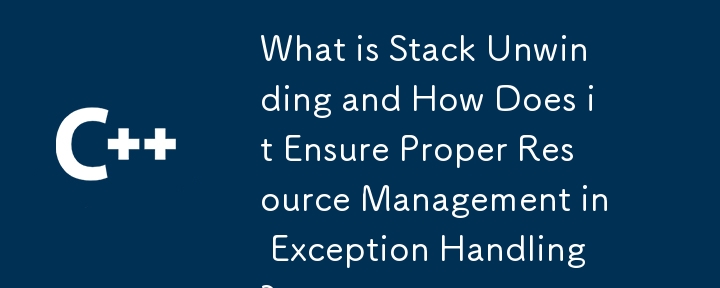

Stack Unwinding: A Comprehensive Explanation
Stack unwinding is a crucial concept in exception handling. It refers to the process of undoing the changes made to the stack during function calls when an exception occurs. Let's walk through an example to understand how it works:
Consider the following code snippet:
void func(int x) {
char* pleak = new char[1024]; // might be lost -> memory leak
std::string s("hello world"); // will be properly destructed
if (x) throw std::runtime_error("boom");
delete[] pleak; // will only get here if x == 0. if x!=0, throw exception
}
int main() {
try {
func(10);
}
catch (const std::exception& e) {
return 1;
}
return 0;
}In this code, the memory allocated for pleak will be lost if an exception is thrown, while the memory allocated for s will be properly released by the std::string destructor in any case. When an exception occurs, the compiler unwinds the stack by calling the destructors of all automatic (stack) variables in the current function.
In the example above, this means that the destructor of pleak will be called to release the memory. However, the destructor of s will not be called because the exception is thrown in the scope of the func function. This ensures that all resources allocated on the stack are released properly, even in the event of an exception.
This concept of stack unwinding is central to the Resource Acquisition Is Initialization (RAII) technique in C , which aims to manage resources such as memory, database connections, and open file descriptors in a way that ensures their proper release when no longer needed or in case of an exception. This provides exception safety guarantees and simplifies the task of resource management.
The above is the detailed content of What is Stack Unwinding and How Does it Ensure Proper Resource Management in Exception Handling?. For more information, please follow other related articles on the PHP Chinese website!




